 These panels are shown from left to right, but the eighth panel is not included.
These panels are shown from left to right, but the eighth panel is not included.
Vertis Hayes was an African American artist. He was born in Atlanta, Georgia, but moved to New York City in the early 1930s to escape from the prejudice in the south and to study art. In 1937 Hayes was commissioned through the WPA to create a series of murals for the Harlem Hospital Center in New York. This mural consisting of eight panels was called Pursuit of Happiness, 1937, New York.
I chose this piece because I find it to be aesthetically pleasing, as well as interesting. I like this style of work and appreciate how the African and African American culture is so vividly expressed through these images. The panels are in chronological order and depict the transitions of the African American people. The panels transport the viewer from Africa to America, from a village in Africa to and African city. The mural also depicts the migration of African Americans from their agrarian lives in the South to the industrialized North. This experience was of personal significance to Vertis Hayes because he migrated from Atlanta to New York.
This piece relates to both the Harlem Renaissance and the Great Depression. It was created by an African American artist and portrays the story of the African people’s progression. This piece is filled with the African culture. It relates to the Great Depression because it was commissioned through the Works Progress Administration which was a social program produced by the federal government to help employ the American people struggling through the Great Depression.
Works Cited:
http://vickeyk.hubpages.com/hub/Art_and_WPA_A_Vanishing_Heritage

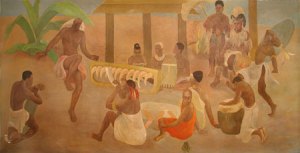
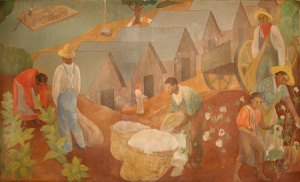
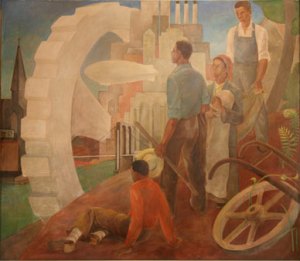
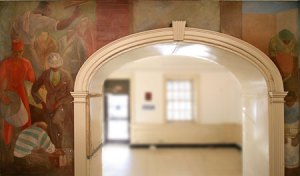
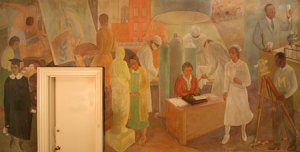
While I absolutely love Dorothea Lange’s photography I am so glad that some individuals chose to post on other works of art during this time. This mural is absolutely gorgeous and has so much depth and meaning to it. I love how it tells the story of Africans emigrating to America. On top of that it highlights their acceptance in the North following the Civil War.
You did a fabulous job in connecting Hayes’s piece to not only the Harlem Renaissance but also the Works Progress Administration of the Great Depression.
I am a little confused though when you state, “The panels transport the viewer from Africa to America, from a village in Africa to and African city.” I am not quite sure what you meant here although after exploring your sources it seems to me that you meant … from a village in Africa to an American city. Is this correct?
Nice job. You included everything necessary, and stated clearly why you liked the piece. You do have one typo, where you said “a village in Africa to and African city,” but otherwise, good job.
You have included what was required in the criteria first of all.
It may not actually be written what the title and artist is, but if you go over the photo’s it shows exactly that. So no problem, but that is what I first thought about.
Although you have only included 1 artist it seems, when it required minimum of atleast 2.
I do have to agree with why you like the art. The culture it shows through these pieces of work and the history it portrays is truly appreciative. I like the art work you have chosen, and the colors are pleasing to my eyes personally. This art work is not crazy in which my eye may find the art uncomfortable. Good work.